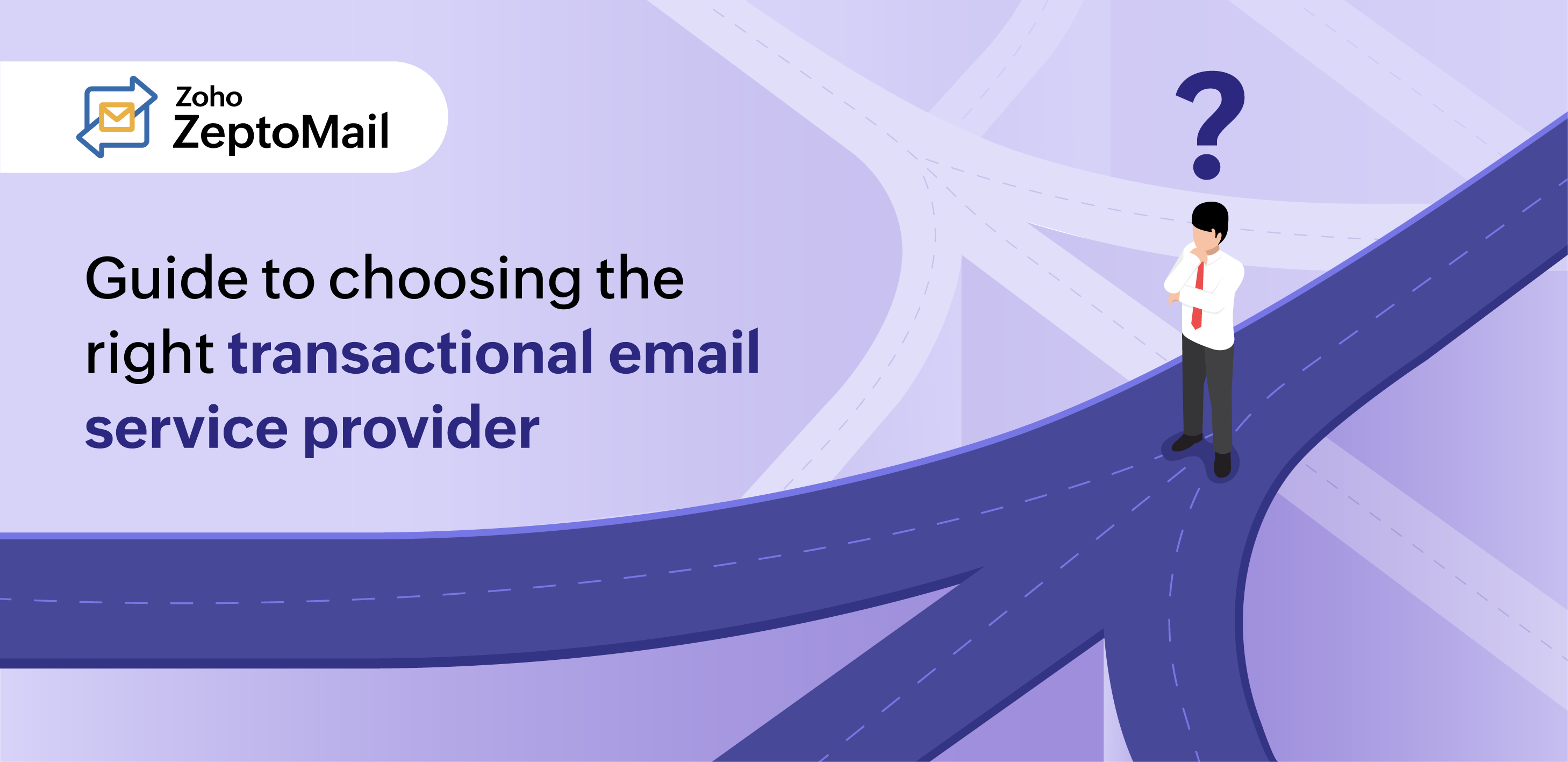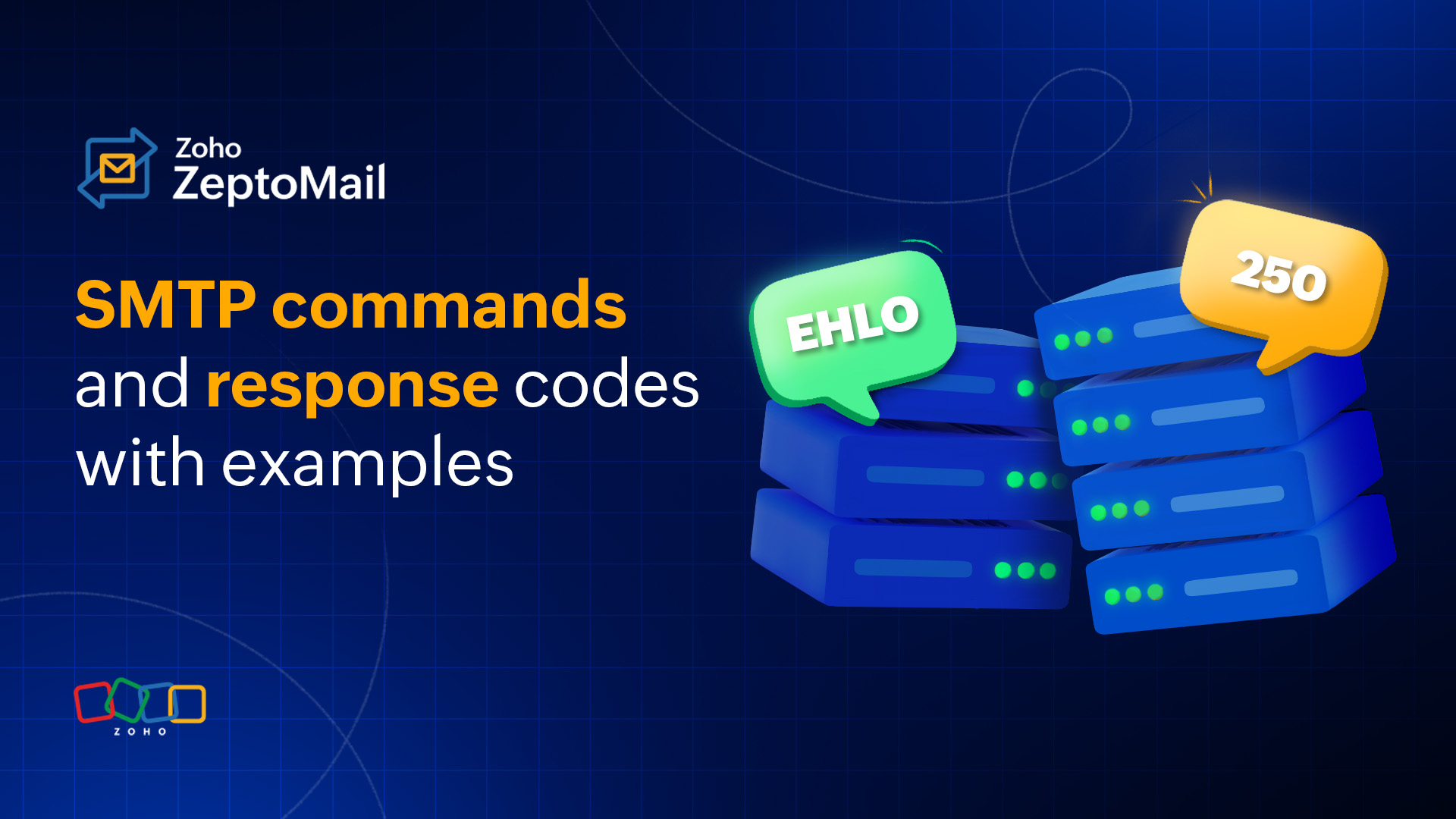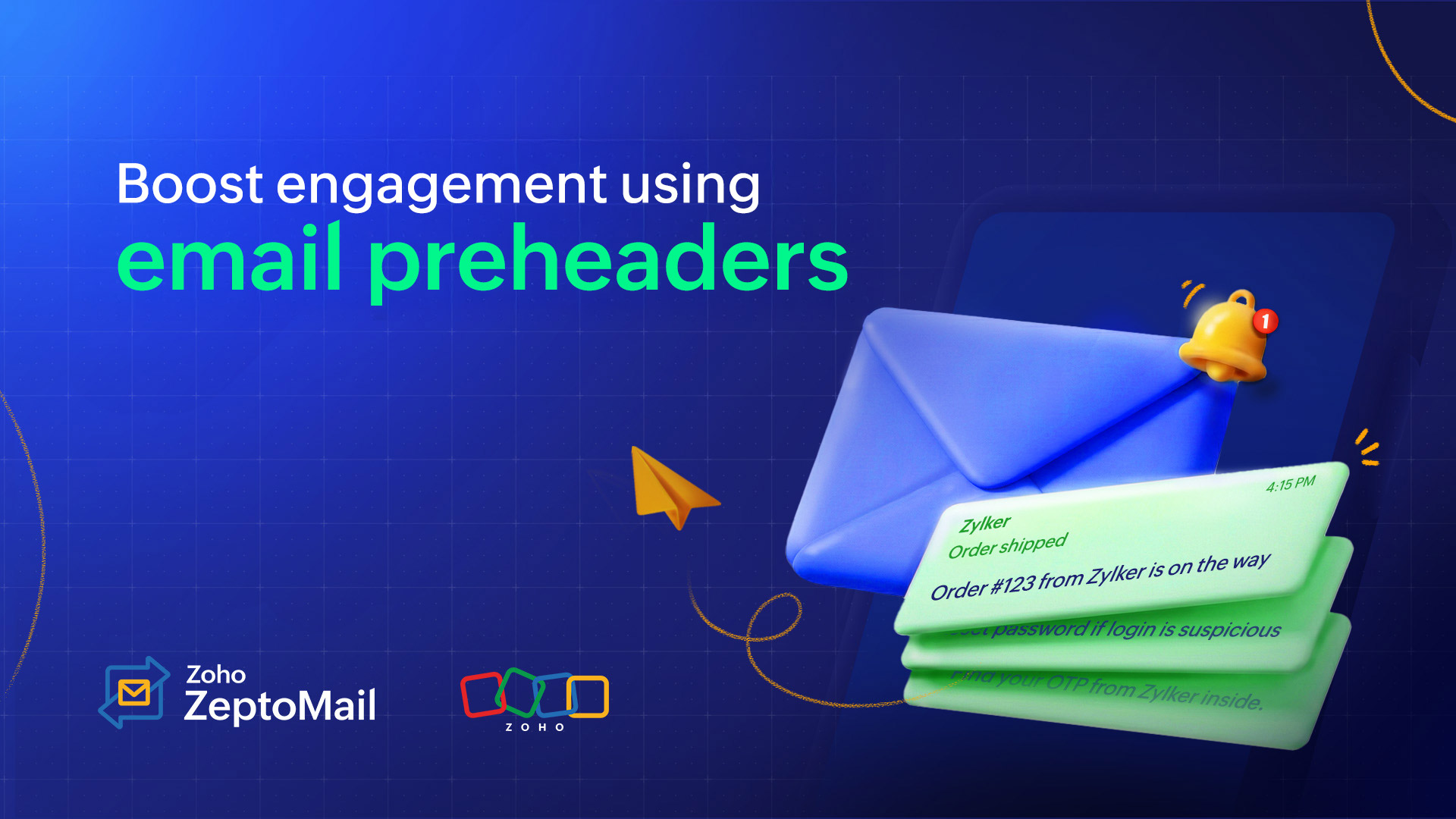- HOME
- Email sending
- Guide to choosing the right transactional email service provider
Guide to choosing the right transactional email service provider
- Published : June 1, 2024
- Last Updated : September 22, 2025
- 379 Views
- 9 Min Read
A major part of running a business involves communication, most of which is done through emails. There are different types of emails that businesses use, such as marketing, transactional, or drip campaigns. Building an infrastructure for these emails from scratch can be beyond the scope of the business. One plausible solution for this problem can be to opt for a service whose main purpose is sending out emails for their clients, which are known as email service providers (ESP).
Each type of email requires a different sending approach. This article will focus on one type, transactional emails. OTP emails, password reset emails, or purchase information emails are user-requested and highly personalized. Here are some of the reasons why transactional emails are important:
Because transactional emails are sent as a response to an action on a website or application, they’re relevant to the recipient and are more likely to be opened. In fact, transactional emails tend to have eight times more open rates than promotional emails. This increased engagement can be used by businesses to build better relationships with their users.
Transactional emails carry important information that’s relevant to the customer, and they’ll be expecting them. By getting these emails to them on time, you encourage the customer to trust you and your service. This is especially significant when the customer is new to your business.
Customers constantly communicate with your service. This includes back-and-forth communication through transactional emails. This constant channel of communication gives you a lot of scope for engaging with them by giving them information about your service. Inherently, transactional emails help you establish your brand's identity with your customers. By including your brand logo and other elements, you can ensure that your brand is memorable and the customer remembers them long after they view the email.
Getting your transactional emails right by delivering them on time, ensuring good engagement, and building trust will keep your customers happy. This will translate into loyalty to your brand and help retain them. Customer loyalty and retention will, in turn, drive more revenue in the long run.
So getting these emails right is crucial. The essentiality of these emails also warrants that you choose a service that gets these emails to your customers on time. With numerous services available, having a baseline checklist will make things much easier for you. Let’s look at the factors you should keep in mind while looking for a transactional email service.

Email deliverability
Email deliverability is an email’s ability to reach the intended recipient's inbox on time. Every email service provider aims to achieve this, no matter the type of emails they send. This becomes all the more important for transactional emails because customers will be expecting these emails. You need to ensure that they reach that inbox and not land anywhere else.
The first step, and in line with the goal of this article, is to use a service that’s dedicated to sending transactional emails. Some services send out both transactional and marketing emails. However, due to the promotional nature of marketing emails, some customers may find them unnecessary and can mark them as spam. Frequent spam instances can cause recipient servers to suspect that the sender isn’t legitimate. As a result, all emails coming from the sender will either be marked as spam or may not even be delivered at all. This will include important transactional emails as well. To ensure maximum deliverability for your transactional emails, it’s advisable to use a service that sends out transactional emails alone.
Although dedicated transactional email services tend to boast of good deliverability, there are some features that you should look out for when evaluating email deliverability.
Email authentication
Email authentication is the method of authorizing the sending domain by adding certain records that will be verified by the recipient. Because popular email service providers mandate email authentication for the domains that send out emails, this step has become a necessity. To authorize your email-sending domain, you must ensure that the service provider you choose gives you the provision to authorize your email-sending domain. This can be done by adding three records to your DNS server. They are:
SPF (Sender Policy Framework): SPF informs the recipient server about all of the servers that are authorized to send emails on your behalf. You’ll add the ESP you choose to send emails for you. This information will be fetched by the recipient server and verified if the authorized sender in the SPF matches the email-sending domain. If there’s a match, then it’s an SPF pass.
DKIM (Domain Keys Identified Mail): DKIM is essentially a signature that you seal your outgoing emails with. The DKIM signature will help the recipient know if the email has been tampered with. Based on the result, the emails will be handled on the recipient's side.
DMARC (Domain-based Message Authentication Reporting and Conformance): DMARC will help you outline the actions that you’ll want to take on emails that fail the first two methods above.
These email authentication mechanisms add a layer of security to your emails and ensure they don’t fall prey to email spoofing.
IP reputation
Because the email service provider you use will be sending emails on your behalf, you should ensure that they’re coming from a reliable source. This includes the IP address used to send these emails. If your ESP has been around for quite some time, the IP they use to send your emails will be warmed up. IP warm-up entails gradually increasing the number of emails you send out to avoid shocking the recipients into thinking you’re a spammer. While all of this will be handled on the ESP's side, one thing you should be aware of is if they provide a dedicated IP to send your emails.
If you’re a business that has a large sending volume, you can additionally opt for a dedicated IP. Dedicated IPs will be used exclusively to send out emails from your domain. So, the ESP will have an IP set aside just for your emails. If you’re looking to choose between the two IPs, you can refer to our guide here.
However, if you opt to choose a dedicated IP, check if it’s been warmed up by the ESP for you. Most providers do this, and it’s ideal to get it checked before you proceed.
Spam monitoring
Using a dedicated transactional email service doesn't guarantee 100% inbox delivery if you don’t follow clean email practices. Although businesses looking to send out transactional emails will ensure they follow good email practices, bad actors trying to impersonate a business can send out unsolicited, spammy content. You should ensure that the sending server has provisions to tackle such instances. The straightforward method to do this is by knowing your ESP’s allowed spam percentage and by knowing how, in the instance of spam, they’re being handled. Most services completely stop email sending if the percentage of spam exceeds the stipulated limit.
These are the factors related to deliverability that will help you decide on a service. Once you get your email deliverability sorted, the next closely related factor is your delivery speed.
Delivery speed
Let’s get it out there. Delivery speed is non-negotiable when it comes to transactional emails. You could argue that is the case for any email service, but having your transactional emails delivered late can have their consequences. Consider the following example.
Say that your customer has placed an order on your application. They’ve made their payment; however, they don’t receive any communication that includes the tracking link. They’ll wait for an hour or two. But without any confirmation from your end, they may get confused as to whether the order is processed or not. They’ll contact your support with queries. One such query can be handled, but frequent queries will increase your support expenses and will force you to add more manpower on that end. This is a problem that could have been avoided if your service delivered your emails on time. Adding more personnel for work that can clearly be handled by the ESP is also going to cost more.
Though these instances may appear blown out of proportion, such compounded instances will come back to bite you in the long run. Although it’s easier to go by the number of emails sent by an ESP, you should know that these numbers are the count of the emails sent out, and there’s no way to know if they’re delivered. So, merely going by the number of emails sent out will not do. You should be aware of the time it takes for the emails to reach various mail clients like Google, Yahoo, Outlook, and more. Every ESP shares these stats on their webpages. Take time to compare ESPs and choose the best service for you.
Cost
The next consideration while choosing a service is cost. To pick the right service, you should know your exact business needs and requirements. Most services offer a base package with add-on features that cost extra. There may be charges for segmenting your emails based on their type or even to provide email authentication.
When it comes to pricing, there are multiple payment options you can choose from. Some services offer you a pay-as-you-go model that allows you to purchase the emails you send out. For example, you can purchase 10,000 emails for a certain value. The emails you buy will be valid for a few months. Some providers give you a set of emails; perhaps set will have 20,000 emails. The set you choose will be billed monthly. You can choose the desired number of sets you wish to use monthly. You could also have a fixed plan where the service provider offers a monthly package that can be billed annually. The emails you send will be determined by the provider.
These are the popular pricing variants businesses use. A combination of the feature list and the emails sent will be used to determine the final pricing of a service.
Features
An efficient transactional email service should be able to provide all of the features that will help you monitor your email's performance. This includes bounce stats, email reports (delivered, opens, and clicks), webhooks, dedicated IPs, email API options, and integration with commonly used platforms.
Apart from this, some providers also give you in-app troubleshooting mechanisms, like suppression lists that help you add email addresses that cause bounces, and message content storage that will help you review your email's contents. These are the core features that give you well-rounded information and support for your emails. They’re non-negotiables.
Anything added to this will fall under second-level feature categories. They aren’t as important as the core features, but they’re still useful and enhance your experience with the service.
Documentation and customer support
Any service will have two types of support—documentation and customer support . This factor should be mainly handled on the ESP's end, and there isn’t much a customer can do. However, a good and proficient documentation is a sign of a customer-friendly business approach and will definitely be a plus.
The hollow documentation will still be overlooked if the in-person support provided is exemplary. You can evaluate the efficacy of the customer service from the initial interaction you have as a prospect with the sales team. Apart from this, reading through tweets and reviews by existing customers will paint a better picture because these are real people going out of their way to laud a service.
As a customer looking for a transactional ESP, you should look out for the ESP's documentation—how clear and well-rounded it is and if the support provided is efficient.
Wrapping up
While ESPs offer a range of features in addition to their service, it can be daunting to decide which one is the right one from the crowd. Choosing the right email service comes down to what you want for your business. Being aware of your expectations and requirements before choosing a service will help you make an informed decision.
In short, here’s the summary of the basic elements you should look for in a service:
- Email deliverability: Delivery rates vary based on the type of emails you send. Purely transactional email services tend to have better rates than services offering both transactional and marketing emails. These delivery rates vary based on how well the sending domain is authenticated, the cleanliness of the IP you use, and the spam instances.
- Delivery speed: Transactional emails should have good delivery speeds. Without being swayed by the number of emails sent, you should assess the time taken to reach the inbox. You can do this by checking the data ESPs provide on their website.
- Cost: A low-cost option may not always mean the better choice, nor will a pricier one necessarily translate into you being swindled. Assessing the reason for the increase and the add-ons available will better help you pick the one that will suit your business.
- Features: There are core and essential features, and then there are luxuries that you can do without. Ensuring that you get the best deal along with all of the core elements covered will be an sustainable option in the long run.
- Documentation and customer support: Rich documentation along with support that is focused on understanding and resolving your issue is key when considering a service.

